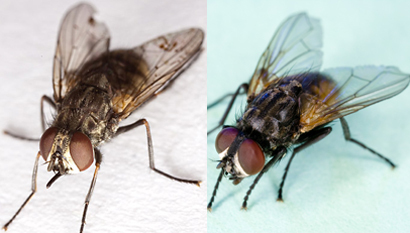More than 100 pathogens are associated with the house fly, including Salmonella, Staphylococcus, E. coli and Shigella. These pathogens can cause disease in humans and animals, including typhoid fever, cholera, bacillary dysentery and hepatitis. Sanitation is critical to controlling these pests, but accurate identification is essential for successful fly control.
Here are some other things you should know about flies and fly control:
• Depending on the species, the life expectancy of a fly is eight days to two months or, in some cases, up to a year.
• Flies belong to the order Diptera, meaning two wings.
• Flies plague every part of the world except the polar ice caps.
• One pair of flies can produce more than 1 million offspring through their offsprings’ offspring in a matter of weeks.
• Millions of microorganisms may flourish in a single fly’s gut, while a half-billion more swarm over its body and legs.
• Flies spread diseases readily because they move quickly from rotting, disease-laden garbage to exposed human foods and utensils.
• Because they only have two wings, flies land often and therefore can deposit thousands of bacteria each time they land.
• Every time a fly lands, it sloughs off thousands of microbes. If a fly lands on food or utensils, customers may ingest germs that can trigger serious illness such as diarrhea, food poisoning, meningitis and bloodstream infections.

HOW TO CONTROL
Bait is a mixture of food attractant and insecticide in order to lure the fly to feed on it and subsequently being poisoned. This approach is environmental-friendly and is safe to be used at sensitive areas such as the pantry, kitchen, poultry farm, etc.
The common house flies are attracted to a certain light spectrum such as the ltra violet light. Flies that are attracted to it will adhere to the sticky sheet located inside the light trap.
A good sanitation control will help to reduce and prevent any infestation.


 Malaysia
Malaysia